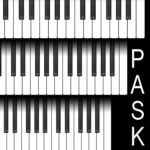Pain, injury & ergonomics
Peer-reviewed epidemiological and clinical research on pianists using the conventional keyboard shows a link between small hand spans and pain and injury.
Recent studies in the US which compare performance and health outcomes for pianists using keyboards of different sizes support this evidence. A pianist moving to narrower keys is, in effect, getting ‘larger hands’.
Female pianists run a much greater risk – approximately 50% higher – of pain and injury than males. Some studies have found that 70-80% of female pianists are affected by playing-related pain or injury at some stage during their lives.
Children and teenagers have also been found to suffer from pain and injury related to piano playing. Piano teachers have a duty of care in this regard – a mismatch between hand size and the repertoire taught can be a factor.
Evidence from inter-related disciplines
The evidence supporting a need for alternatively sized keyboards, from a pianistic health perspective, is growing rapidly, and is drawn from different fields of research:
- Epidemiological and clinical studies linking hand size to piano-related pain and injury.
- Principles from the sciences of ergonomics and biodynamics.
- Comparative studies involving the use of alternatively sized and conventional keyboards.
Some studies focusing on various aspects of performance quality, together with considerable anecdotal evidence, also suggest that musical and technical aspects of a performance are greatly influenced by hand span. See also: Feedback from pianists
‘For 40 years, I have devoted my career to understanding how to prevent playing-related injury at the piano. The hallmarks of good coordination – optimal skeletal alignment and efficient muscle use – were my mantra. The only problem is, it is impossible to be “optimally” aligned on octaves and big chords if you are a small-handed pianist. Each time we play those passages at forte or fortissimo, no matter how efficient our technique, we increase our risk for injury. When that much force is repeatedly placed on small joints in hyperextension, they just wear out over time. Muscle strain and extensor tendonitis are also frequent byproducts.’
Dr Barbara Lister-Sink, Professor and Director of the School of Music, Salem Collage, NC.
Please explore this evidence in more detail:
Epidemiological and clinical studies
Principles of ergonomics and biomechanics


